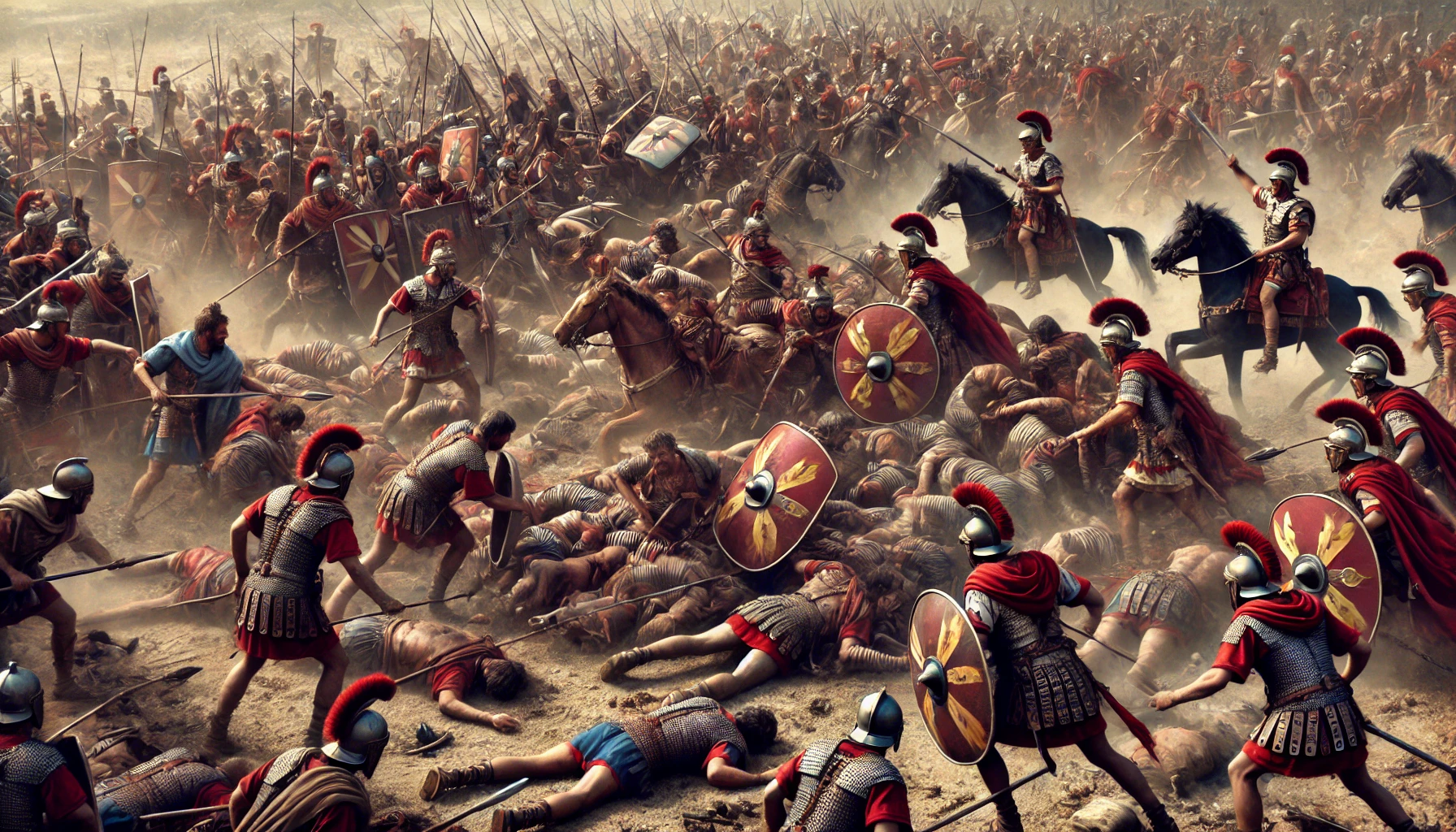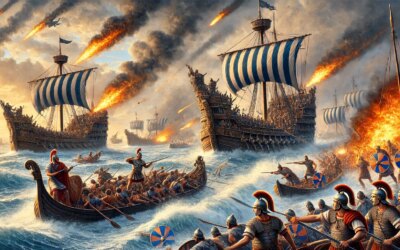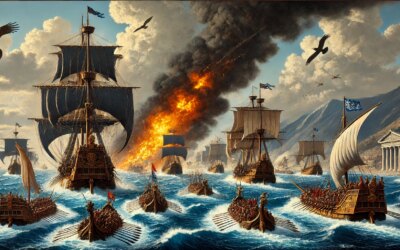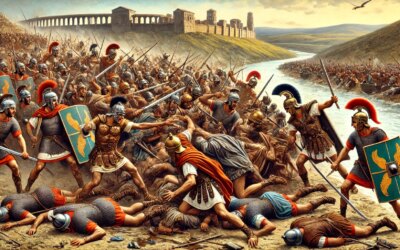A Clash That Shook the Roman Republic
The Battle of Cannae, fought on August 2, 216 BCE, remains one of the most catastrophic defeats in Roman military history. Facing Hannibal Barca, the brilliant Carthaginian general, Rome fielded one of its largest armies ever assembled. Yet, in mere hours, Hannibal executed a masterful encirclement that led to the near-total destruction of the Roman force. How did this legendary battle unfold, and what were its long-term consequences for the Republic?
The Road to Cannae
By 216 BCE, Rome and Carthage had been locked in the Second Punic War for several years. After Hannibal’s daring march over the Alps and his victories at Trebia (218 BCE) and Lake Trasimene (217 BCE), the Romans sought to end his threat decisively. To achieve this, they raised an enormous army—estimated at 80,000 infantry and 6,000 cavalry—under the joint command of consuls Lucius Aemilius Paullus and Gaius Terentius Varro. Their goal was to overwhelm Hannibal’s smaller force of roughly 50,000 men through sheer numbers.
The Battlefield and Strategy
Cannae, located in southeastern Italy, was chosen as the battlefield. The open plain seemed ideal for Rome’s traditional strength—its heavy infantry formations. However, Hannibal carefully positioned his troops to take advantage of the terrain and prevailing winds, which would blow dust into the Romans’ faces.
Hannibal’s army was a diverse and highly skilled force, consisting of veteran Carthaginian infantry, Iberian and Gaulish warriors, Numidian cavalry, and other mercenaries. His strategy was unconventional: instead of resisting Rome’s numerical superiority head-on, he deliberately arranged his troops in a crescent formation, with his center slightly advanced and his flanks reinforced.
The Devastating Encirclement
As the battle began, Hannibal’s center engaged the Roman infantry. As expected, the disciplined Roman legions pushed forward, pressing the Carthaginian line backward. However, this was precisely what Hannibal had anticipated.
As the Romans drove into the center, the Carthaginian flanks—comprised of hardened African infantry—held firm. Meanwhile, Hannibal’s superior Numidian and Iberian cavalry routed the Roman cavalry on both wings. With Roman horsemen fleeing, the Carthaginian cavalry swung around to attack the Roman rear, closing the trap.
In one of the most brilliant tactical maneuvers in history, the Roman legions found themselves completely surrounded. With no room to maneuver, they were cut down in a horrific slaughter. Contemporary sources suggest that up to 50,000–70,000 Roman soldiers perished in a single day, including both consuls and most of the Senate’s political elite who had joined the army.
The Aftermath and Rome’s Response
The scale of the defeat was unprecedented. Cannae’s devastation left Rome vulnerable, and many of its allies wavered in their loyalty. Some Italian cities defected to Hannibal, while others hesitated, seeing Rome’s apparent weakness. The Senate, normally divided, responded with remarkable unity, forbidding public mourning and focusing instead on rebuilding the army.
Despite Hannibal’s overwhelming victory, he did not march on Rome itself. Whether this was due to logistical concerns, a lack of reinforcements, or a calculated strategy, remains debated by historians. Rome, refusing to surrender, adapted its military approach. Under the leadership of Quintus Fabius Maximus, the Romans adopted a war of attrition, avoiding pitched battles and gradually reclaiming lost ground.
Legacy of the Battle
The Battle of Cannae remains a textbook example of tactical genius. Hannibal’s encirclement strategy is still studied in military academies worldwide. However, despite his success, Carthage ultimately failed to capitalize on the victory, and Rome eventually turned the tide of the war.
By 202 BCE, the Romans, under Scipio Africanus, defeated Hannibal at the Battle of Zama, sealing Carthage’s fate. Yet Cannae’s lessons endured, influencing countless future commanders, from Napoleon to modern military strategists. Rome, though bloodied, proved its resilience—an empire that could suffer immense loss and still rise stronger than before.






